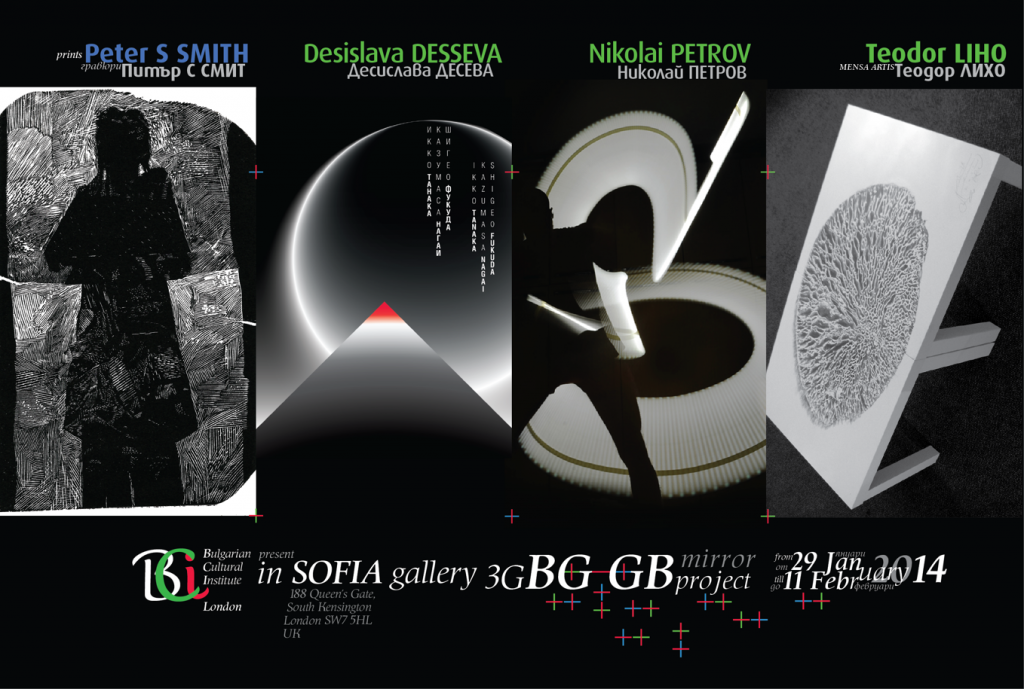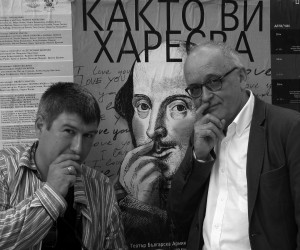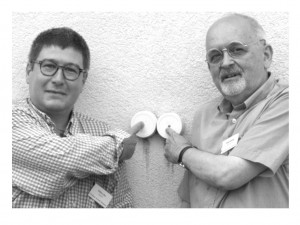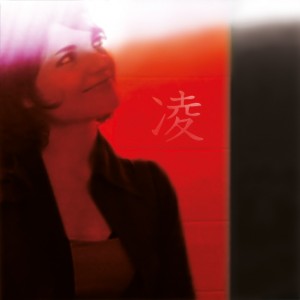Exhibition opening: Prints

Prints
by Teodor Liho (Bulgaria) and Peter S Smith (United Kingdom)
Dessislava Desseva (Bulgaria) and Nikolai Petrov (Bulgaria)
19:00h Sofia Gallery
The exhibition will continue until the 14th of February 2014
Theodor Liho and Peter S Smith have been colleagues for over ten years. They lead workshops and curate the exhibition of participants at the annual CA Seminars in the Netherlands and Germany. Both their careers have successfully combined academic experience as art and design educators with intensive work as professional artists/designers.
The work of these artists provides interesting parallels and contrasts. Both artists have an interest in visual language in traditional and contemporary form. Both believe in the power of visual language as a creative means of communication and visual expression.
Smith explores the potential for visual metaphor in observed appearance using traditional graphic techniques. Liho’s clear understanding of traditional graphic process and design also finds expression in the creative use of contemporary digital and photographic media, often moving into thought provoking installations.
They first exhibited together in 2012 in the Mission Gallery at the Institute for Culture of the Ministry of Foreign Affairs, Sofia. They are delighted to bring their work together again for this exhibition in the Sofia Gallery of the Bulgarian Cultural Institute in London.
It is also a pleasure to introduce the work of two talented young Bulgarian artist/designers, Desislava Desseva and Nikolay Petrov.
Peter S Smith is a Painter/Printmaker based in London.
Peter S Smith studied Fine Art at Birmingham Polytechnic (BA (Hons) Fine Art, 1969), Art Education at Manchester University (Post Graduate Certifcate in Education,1970) and at Wimbledon School of Art (MA (Printmaking) 1992)
He is a member of the Society of Wood Engravers and Associate Member of the Royal Society of Painter-Printmakers. His paintings and prints are exhibited in the UK and overseas with works in public and private collections, including Tate Britain and the Ashmolean, Oxford.
In September 2006, Piquant Editions published a book about his printmaking called “The way I see it….” With an Introductory essay by Calvin Seerveld.
He was the Head of the School of Art and Design at Kingston College from 1983 to 2010 and continues to teach workshops in the visual arts. He currently teaches wood engraving at the St. Bride Foundation.
“After our first exhibition together in Sofia in 2012 it is a privilege to be able to exhibit again with colleague and friend Theodor Liho in London. Prints form an integral part of my work as paintings, drawings and prints converse with each other. I have always been interested in the appearance of things and how this is re-imagined in visual language. The prints chosen for our exhibition have become a kind of ‘retrospective’ with examples of my prints from the last decade alongside more recent work”
peterssmith.weebly.com

Teodor Liho and Peter S Smith in Sofia, Bulgaria, May 2011
Teodor Liho and Peter S Smith during CA seminar in Bad Honnef, Germany, August 2013
Theodor Liho is a Sofia based visual artist and educator in the Academy of Arts Advertising Design Department, working in the fields of graphic design, new media and alternative art forms.
He graduated in Sofia National Gymnasium of Fine Arts (BA, Graphic Arts 1980-85) and Sofia Academy of Arts (MA, Exhibition Design Department 1987-92). Taking master classes in Photography, Ceramic, Video Art, Set Design and New Media.
Theodor Liho has an international career with a long list of solo projects with participation in team art-projects in Bulgaria, Romania, The Netherlands, Belgium, France, Germany, Serbia, Egypt, USA, Mexico, Japan and China. He is a jury member of many international graphic design and creative competitions in advertising and ExLibris collections consultant.
Works by Theodor Liho are part of many private and public collections including M-tel Collection of Contemporary art and Colorado State University.
Theodor Liho is guest lecturer in visual arts and workshop leader in Mexico,
The Netherlands, Belgium and Germany. 2006 – 2009 live and work in Belgium.
In 2010 he was Artist in Residence in Cite des Arts-Paris.
http://teddy-liho.weebly.com
MENSA ARTIS
TABLE ART / L’art a table / ?????? ???????? (Mass art)
The wordplay in Bulgarian language presents ‘Table art’ as an accumulation of human and non-human mass from one side, and the idea of a table (in Bulgarian ‘masa’) as furniture object from another side.
These semantic associations postulate the artistic interpretation of the label MASS art or commercial art.
The totalitarian political systems have been always flirting with the muses of art and have used different forms of art as a propaganda instrument. On one hand, the totalitarian regiments were trying to conceal their origin or to cultivate nobility out of their genetic tyrannous image. On the other hand, the art works were used as propaganda channels of the totalitarian ideology, oriented to satisfy the mass audience with already totally replaced or out-of-date aesthetic values. Therefore, the core function of art as an expression of personal aesthetic and philosophical positions has been voided, and it has not been perceived any more as a reflection of the sensitivity of its creator…
In current post-totalitarian societies the same deficit or replacement of art form functions continues, but the main subjects are the consumer and the fetish-product itself. The ideological propaganda has been replaced by advertising messages, modeling the consumer’s values. The only left possibility for the author or the art product, facing the old dilemma “to have or to be”, is to formulate adequate questions challenging the daily life, to mark a different perspective to stereotypes, and to extend the vision of the future.
Desislava Desseva is Sofia based visual artist and designer.
Works in the field of graphic design and typography, poster, spatial design, photography, web- design, interactive design and multimedia, textile-design. She is currently graduating from The National Academy of Art, Sofia
(MA in Advertising Design) and working as a graphic and web-designer.
Desislava won numerous competitions and many awards such as:
1-st prize of ProGRAFICA magazine and Advertising Expo;
Diploma of” Ninth National Competition for Company Calendar;
1-st prize at the exhibition “Ikko Tanaka, Kazumasa Nagai, Shigeo Fukuda – Great Masters of the poster from Japan”, Mission Gallery’’ (2011).
She was also a Student award winner of ’’Sixth International Triennial of Stage Poster’’, Sofia for the poster
’’The Theatre – That is Me’’. (2010).
Exhibitions: Joint exhibition, ” Academy” Gallery, Sofia (2009); international poster exhibition
” Messages to the world”, Shanghai, China (2010); exhibition” 2010 – year of Chopin”, poster, part of the collection of ’’Sixth International Triennial of Stage Poster’’, Sofia; exhibition “Advertising – Design – Redesign” at “Alma Mater” gallery(2012); exhibition “Design Academy”, SOFIA DESIGN WEEK (2013) .
‘’ I am really honored to be able to exhibit with Theodor Liho and Peter S Smith, artists and professionals, who freely claim ‘’The Way I see it’’ point of view. I share their passion for exploration, deconstructing reality, constantly asking questions and searching for new means of expression.
I use structures, codes, symbols and letterforms that we are used to perceiving in a certain way and give them new meanings, which let them be a part of an aesthetic symbiosis. My works show a visual language which allows type to carry out multiple messages – visual metaphors based on free associations.’’
Nikolay Petrov is a multidisciplinary visual artist from youngest Bulgarian generation.
He is working in different fields, exploring the possibilities of human imagination. Mostly he is known for his street art works, together with his crew ‘140 IDEAS’ (www.140ideas.eu) where they paint huge, socially engaged murals. Nikolay has studied “Advertising Design” in the National Academy of Arts in Sofia, Bulgaria.
Besides graffiti and street art his work goes through origami and recycling paper, to calligraphy and typography as well as design and photography. Most of the time based on experiments, his work can be described as great mixture of different techniques and media, unpredictable and interesting for observation.
In this current exhibition the artist is represented by his project “Samurai of Light”. Nikolay use photography to create typographic compositions out of light. Long exposure photography gives him the possibility to “catch” the light in a frame and paint with it.
The artist has created seven Japanese “kanji” symbols each of them representing one of the seven Bushido virtues. Bushido literally means “the way of the warrior” and symbolise the samurai moral code.
“Today we need more than ever to find out the Samurai inside us, so we can act more human and kind, not just to others, but to ourselves as well. The “way of the warrior” remains hidden, if we are not reaching out for the LIGHT inside us.”
Bushido is a code of conduct followed by traditional samurai warriors. It is consist of seven virtues which formed the physical and mental content of the warrior`s training. The bushido virtues not only applied to their physical training, but flowed on into their everyday lives.
The seven virtues of Bushido can guide us in our way of becoming the warrior of new day. They are very simple and should be respected and used everyday.
RECTITUDE – “Gi” is the ability to make the correct decisions with confidence, to be fair and equal towards all people no matter what color, race, gender or age. Gi is to do the right thing.
COURAGE – “Yu” is the quality of mind or spirit that enables a person to face difficulty and danger without fear. Yu is the ability to handle any situation at any time.
BENEVOLENCE – “Jin” can also be translated as Compassion and is related to prevent arrogance within one’s self and using their skills to hurt others. Jin is the desire to do good to others.
RESPECT – “Rei” is to treat others with dignity and honor the rules of our family, school and nation. Respect yourself, and others will respect you.
HONESTY – “Makoto” is best described, as “one must be honest to oneself before they can be honest with anyone else”. Makoto means truth in word and action.
HONOR – “Meiyo” is hardly the most profound concept in Bushido. The Samurai lived and died by their honor.
LOYALTY – “Chugi” is the foundation of all the virtues, without dedication and loyalty to the task at hand, the desired outcome cannot be achieved.
“Chivalry is a flower no less indigenous to the soil of Japan than its emblem, the cherry blossom; nor is it a dried-up specimen of an antique virtue preserved in the herbarium of our history.”
Inazo Nitobe




